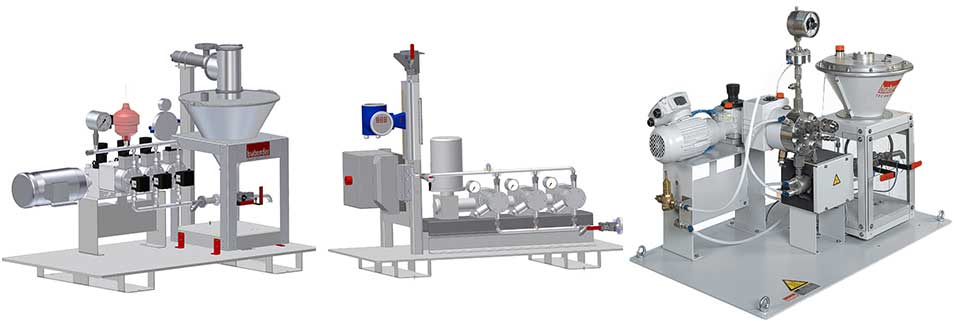Liquid Loss-in-Weight Feeder Design

Loss-in-Weight Feeders for Liquids
Liquid loss-in-weight feeders are suitable for handling a wide range of liquids, both low and high viscosities, at many different feedrates and in multiple industries.
As liquids are considered to be incompressible fluids they offer a more consistent feeding characteristic as their density varies only slightly with temperature. This gives them excellent volumetric feeding consistency and the addition of a weighing system allows for highly accurate gravimetric control and feedrate monitoring
The pump selection is critical as many different pumps types exist and this most be closely matched to the feed material.
Brabender liquid feeders are available with feed capacities that are split into low (1-1000 l/hr), medium (50-5000 l/hr) and high (100-10000 l/hr) applications.
Liquid Feeder Configuration
A typical liquid loss-in-weight system is made up of three main components:
- The tank holding the liquid which is weighed.
- The weighing system either as a weigh scale or load cells
- The pump and motor selected to match the liquid and the feedrate range required
The Brabender FDDW liquid loss-in-weight feeder is fitted with a weighing system built around the DigiMass-2 digital load cell and is capable of measuring very low feed rates.
Liquid systems can also be supplied in a volumetric version, with a flowmeter or with alternative weighing systems for special applications.
Liquid systems often require different options due to the nature of the liquid or liquids Being handled. These include options such as heated tanks, quick draining valves and hygienic easy to clean designs.
Customising Your Liquid Feeder
As mentioned, every liquid system is customised to some extent, to match the products it is designed to handle. The type of pump used by the liquid feeder system is dependent on various characteristics of the liquid - these include density, viscosity, solids content, temperature, reactivity, and toxicological properties.
It will also depend on your process requirements, including the accuracy, feed range, turndown ratio and counterpressure.
Pumps may struggle to cope with a wide required feedrate range for example.
Two of the most common types of pumps available for Brabender liquid systems are:
Gear Pump
A gear pump is a compact and energy efficient pump that offers uniform conveying by means of counterrotating gears.
Suitable for highly viscous liquids such as silicone oils and prepolymers, it is pulsation-free and provides a high degree of feeding accuracy.
Piston Diaphragm Pump
A piston diaphragm pump provides piston stroke-based conveying in single, double or treble piston crown configuration. It is low-maintenance through diaphragm monitoring and suitable for low-viscosity media such as water, plasticizers and silanes. It has counter pressures up to 350 bar and a high degree of efficiency.
Other pumps that we have successfully used for different liquids include:
- Hose Pumps
- Rotary Piston Pumps
- Eccentric Screw Pumps
Typical Optional Extras
If a liquid becomes very viscous at lower temperatures, it may need to be heated before being added to the process. A number of heated tank versions are available with Brabender liquid feeders, typically electrical heating, hot water jackets, thermal oil and steam heating.
As an alternative to a loss-in-weight liquid system, a Coriolis Mass Flow Meter can be used in combination with an upstream dosing pump.
Both systems can be connected to the Brabender Congrav control system and integrated into a feeding system with powder and pellet feeders.
Further Information
If you would like to find out more about the Brabender loss-in-weight liquid feeder range, please use the details on our contact page.
